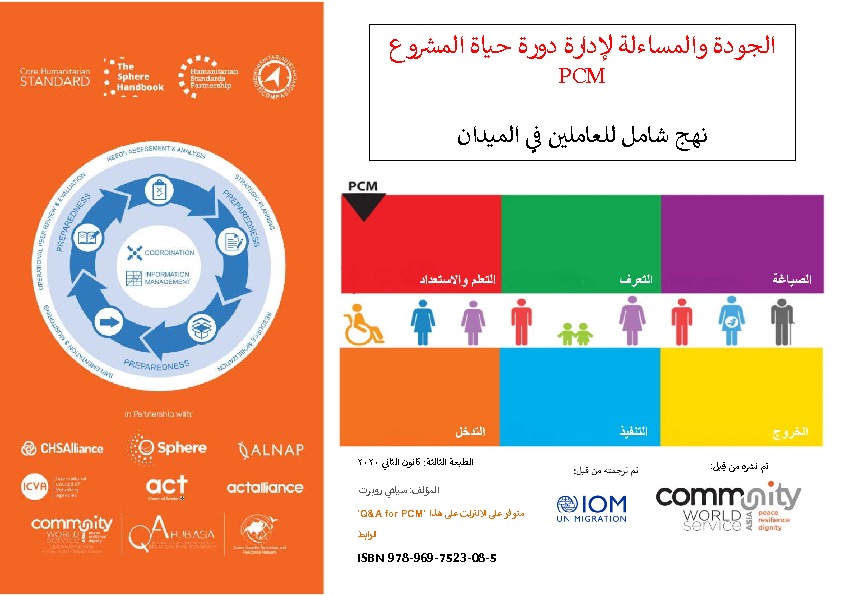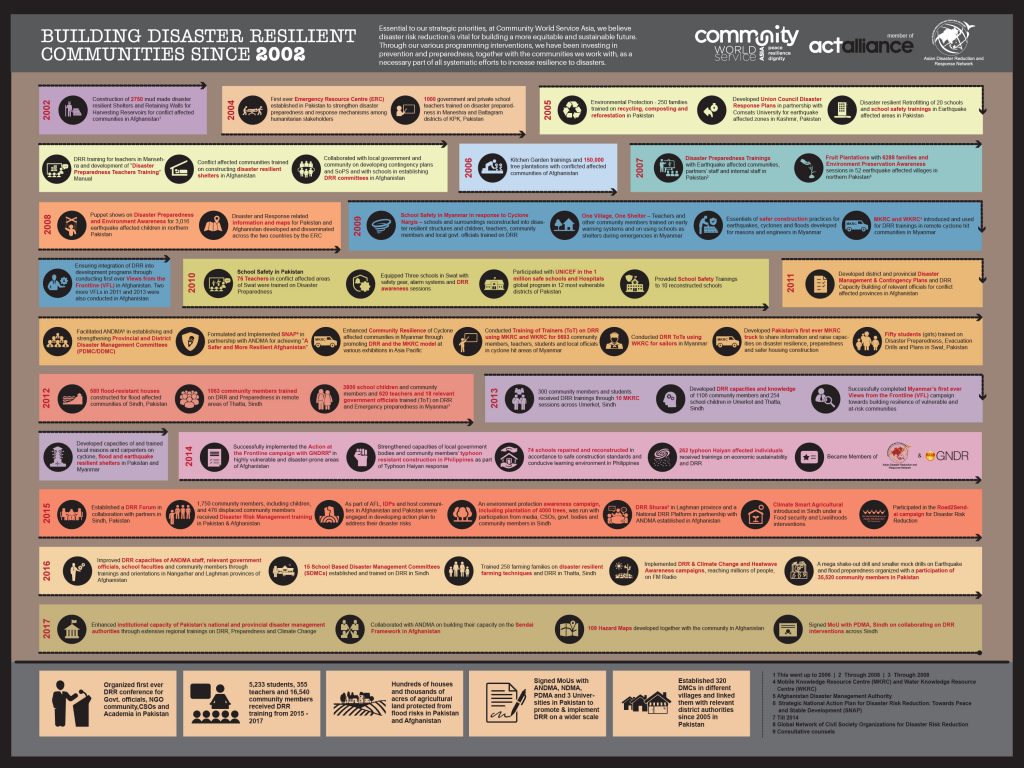
Feedback
Feedback
Feedback
The communities in the Indus river delta encounter disastrous floods and other climatic hazards very frequently. The most devastating effects of these disasters reflect on the agrarian livelihoods of these communities. To combat these adverse impacts and to lead normal lives, communities must resort to alternative sources of income. In this fight for survival, women must equally participate in livelihood generation and disaster risk reduction activities.
Women of Rahim Dino Thaheem village in District Sujawal in Sindh, Pakistan are aware of these challenges and are responding in an exemplary way. Community World Service Asia (CWSA) is working closely with these women and their supportive communities, among many other in rural Sindh, to facilitate them in achieving economic empowerment.
This film tells the story of Bakhtawar, a young theater activist, who is spreading awareness about reproductive health and rights as well as against the generations long custom of child marriage. She has also managed to convince her parents about the importance of education and wants to continue her studies. She is an active participant in disaster risk reduction activities.
Shahnaz, a mother of nine, belongs to the same village and, despite hurdles from her family, has been able to earn a decent earning by joining the vocational center established by Community World Service Asia. Other than enhancing her skills, the center has also made her part of the Women Enterprise Groups, developed by CWSA, and connected her with sales agents that help her, and many other similar artisans, receive orders from renown fashion designers and urban fashion labels in metropolitan hubs of Pakistan. This practice has helped reduce the exploitation rural craftswomen face at the hands of middle-men as well as empowering them with a sustainable livelihood.
Through a comprehensive community empowerment project, Community World Service Asia is instilling messages of self-reliance as key to the resolution of both economic and social problems. Whether it is economic empowerment or disaster risk reduction, women are equal to men in resolving the issues confronting families and communities, leading them to pave paths to a resilient future.
Community World Service Asia works with rural, disaster prone communities in Sindh to improve their disaster resilience through trainings, awareness and other capacity building initiatives. We focus on raising awareness on Disaster Risk Reduction among women, men, boys and girls to enable them to respond effectively to future emergencies. We do this not only to reduce the level of vulnerable groups in any disaster but also promote a level of sustainability.
Trainings on DRR are imparted through the use of a Mobile Knowledge Resource Centre (MKRC), a training vehicle for disaster preparedness, which uses simulation models and hands-on group activities to engage students, youth and community members.
Dissemination of other informational material such as posters, videos on DRR and implementing practical evacuations and exercises in schools in rural Sindh are among the resilience building activities we engage children and youth groups in. These videos on DRR are part of our Resilience Building campaign shown to children and youth groups in vulnerable and disaster prone rural areas of Pakistan.
Community World Service Asia works with rural, disaster prone communities in Sindh to improve their disaster resilience through trainings, awareness and other capacity building initiatives. We focus on raising awareness on Disaster Risk Reduction among women, men, boys and girls to enable them to respond effectively to future emergencies. We do this not only to reduce the level of vulnerable groups in any disaster but also promote a level of sustainability.
Trainings on DRR are imparted through the use of a Mobile Knowledge Resource Centre (MKRC), a training vehicle for disaster preparedness, which uses simulation models and hands-on group activities to engage students, youth and community members.
Dissemination of other informational material such as posters, videos on DRR and implementing practical evacuations and exercises in schools in rural Sindh are among the resilience building activities we engage children and youth groups in. These videos on DRR are part of our Resilience Building campaign shown to children and youth groups in vulnerable and disaster prone rural areas of Pakistan.
Community World Service Asia works with rural, disaster prone communities in Sindh to improve their disaster resilience through trainings, awareness and other capacity building initiatives. We focus on raising awareness on Disaster Risk Reduction among women, men, boys and girls to enable them to respond effectively to future emergencies. We do this not only to reduce the level of vulnerable groups in any disaster but also promote a level of sustainability.
Trainings on DRR are imparted through the use of a Mobile Knowledge Resource Centre (MKRC), a training vehicle for disaster preparedness, which uses simulation models and hands-on group activities to engage students, youth and community members.
Dissemination of other informational material such as posters, videos on DRR and implementing practical evacuations and exercises in schools in rural Sindh are among the resilience building activities we engage children and youth groups in. These videos on DRR are part of our Resilience Building campaign shown to children and youth groups in vulnerable and disaster prone rural areas of Pakistan.
Community World Service Asia works with rural, disaster prone communities in Sindh to improve their disaster resilience through trainings, awareness and other capacity building initiatives. We focus on raising awareness on Disaster Risk Reduction among women, men, boys and girls to enable them to respond effectively to future emergencies. We do this not only to reduce the level of vulnerable groups in any disaster but also promote a level of sustainability.
Trainings on DRR are imparted through the use of a Mobile Knowledge Resource Centre (MKRC), a training vehicle for disaster preparedness, which uses simulation models and hands-on group activities to engage students, youth and community members.
Dissemination of other informational material such as posters, videos on DRR and implementing practical evacuations and exercises in schools in rural Sindh are among the resilience building activities we engage children and youth groups in. These videos on DRR are part of our Resilience Building campaign shown to children and youth groups in vulnerable and disaster prone rural areas of Pakistan.
As country focal point in Pakistan and regional partner for Sphere in Asia, Community World Service Asia has assumed a leadership role in the field of Quality & Accountability (Q&A) among aid organizations in Asia since 2005. It has initiated and supported the recognition, understanding and adopting of Q&A principles in development and humanitarian assistance across Asia. We have been committed to mainstreaming Q&A standards, tools and practices throughout our programming. Our goal has been to promote and develop our internal technical capacity, as well as to support our colleagues and partners in the region to incorporate Q&A into their interventions. Community World Service Asia’s strategy continues to ensure shifts in mindsets and practices leading to a growing capacity to self-monitor the levels of Q&A compliance.
To further support humanitarian and development practitioners/organizations in the region and enhance synergy between current scope of our work and emerging needs on Q & A we have now become the focal point of ADRRN’s Q&A Hub in Asia. The Hub has been developed as part of ADRRN’s marketing strategy for 2020, to Increase the effectiveness of humanitarian response of front line national organizations in Asia through enhanced Q&A mechanisms. The main objectives of the Q&A Hub in Asia for the upcoming three years will be to:
Read more on the ADRRN Marketing Strategy 2020 and its Hubs Toolkit here.
Download: ADRRN Hubs Toolkit
Download: ADRRN Strategy 2020 Marketing Toolkit

International Day for Disaster Reduction, held annually on 13th October, celebrates the way that people and communities around the world reduce their exposure to disasters and raise awareness about the risks that they face. This includes disaster prevention, mitigation and preparedness (UNISDR). This year at Community World Service Asia we are celebrating and looking back at all the work we have done with the communities we work with on reducing disaster risks and increasing their preparedness to natural hazards.
Essential to our strategic priorities, at Community World Service Asia, we believe disaster risk reduction is vital for building a more equitable and sustainable future. Through our various programming interventions, we have been investing in prevention and preparedness, together with the communities we work with, as a necessary part of all systematic efforts to increase resilience to disasters.
Community World Service Asia, continued to promote Q&A in Pakistan during 2016. Where possible, the activities related to the Sphere Project were implemented in coordination with other Q&A initiatives such as CHS and Sphere Companions. The activities are planned to reach wider audiences at various levels in order to ensure that Q&A is high on the agenda during emergency and non-emergency periods.